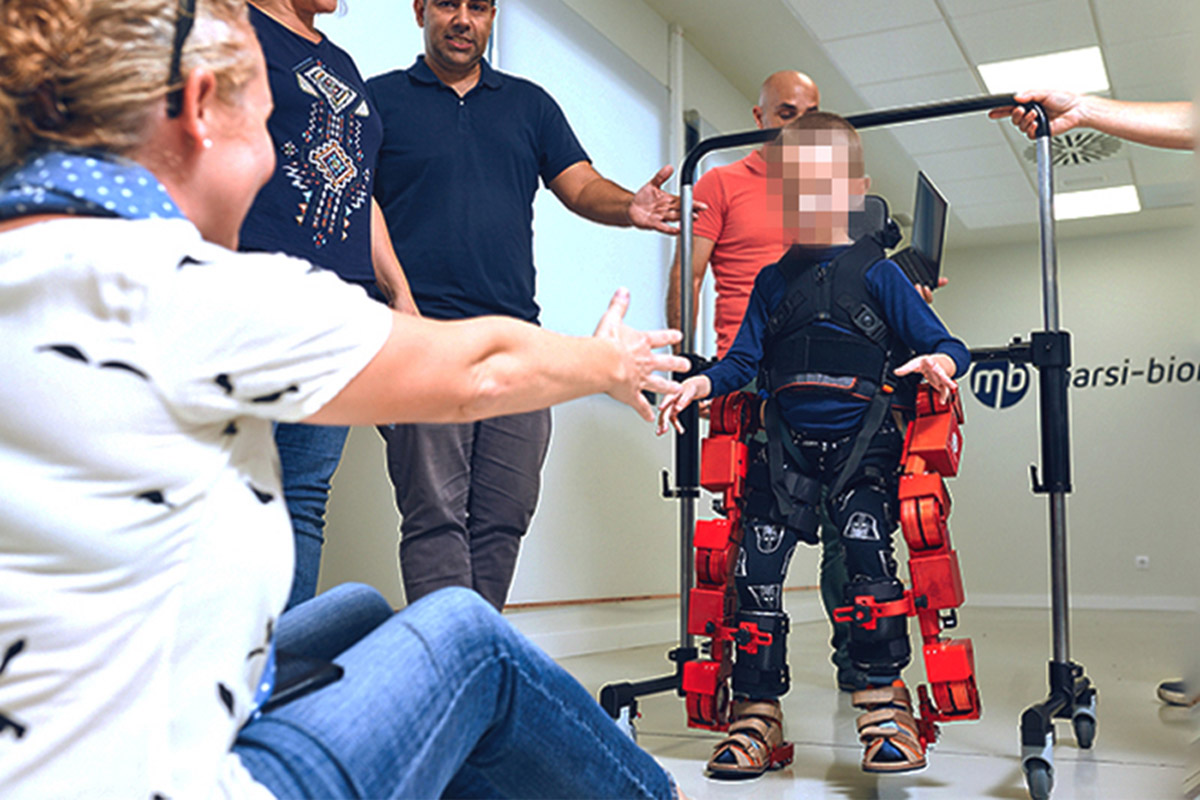How Magnetic Encoders Help Build Life Changing Exoskeletons
Millions of people suffer from debilitating neurophysical conditions such as paraplegia, cerebral palsy and spinal muscular atrophy (SMA)

Recent advances in robotics mean that neurological rehabilitation can move away from passive aids, such as canes and walkers to more advanced technologies.
Marsi Bionics S.L. is a leading technology start-up based in Madrid, Spain that designs and builds custom robot exoskeletons to give physically disabled people the freedom to stand, move and interact with their environment.
Data collected from encoders fitted to the exoskeletons is fundamental for generating position references. Marsi Bionics approached RLS, a Renishaw associate company, to provide the best encoder feedback solutions for its applications. This resulted in the supply of the latest in magnetic encoder technology for the creation of two new products: the ATLAS 2030 exoskeleton for children and the MB-Active Knee (MAK) single-joint exoskeleton for adults.
Challenges
The ATLAS 2030 exoskeleton has up to six degrees of freedom per limb, allowing the user to perform actions such as walking and sitting. To allow patients to complete these actions, the designer must find a compromise between a lightweight and compact structure that facilitates handling by a user and a robotic system that implements a physiologically complete biomechanical model.
“Obtaining reliable and accurate angular position references is the most difficult challenge when developing exoskeletons,” explained Alberto Plaza, R&D Engineer and Manager of the MAK project at Marsi Bionics. “Previously we used our own custom-made PCB encoders but the joint motors regularly generated stray magnetic fields that can interfere with magnetic encoders and cause faulty readings. When designing the ATLAS and MAK devices we needed encoders that were as compact as possible without compromising on performance and gave accurate and reliable angular positions of each axis.”
Solution
Marsi Bionics selected the RLS Orbis encoder for its ATLAS exoskeleton and the RLS RM08 encoder for its MAK knee-joint exoskeleton. The Orbis encoder is a component-level absolute rotary encoder designed for space constrained applications and has a through-hole design, which enables direct mounting on the joint motor shaft. The RM08 encoder is a miniature high-speed rotary magnetic encoder, which has an 8 mm diameter and is IP68-rated for use in harsh environments.
Both encoders feature low weight and volume to minimise inertias, a non-contact and frictionless design to eliminate mechanical wear, and high angular resolution and accuracy to ensure excellent servo performance.
Results
“It is vital to achieve a stable movement and an exact position of each joint of these devices, so the data collected from the encoders is fundamental for generating the position references. RLS and Renishaw provided us with the best encoder feedback solutions for our applications”, concludes Mr Plaza.
RLS magnetic encoders have enabled Marsi Bionics to design and build exoskeletons that could improve the quality of life for people suffering from neurophysical conditions. Active exoskeletons will particularly impact the lives of young children, aged six and above, who are unable to move around by themselves.
CONTACT
Chris Pockett
Renishaw plc
uk@renishaw.com
www.renishaw.com
+44 1453 524524
Wednesday 25 November 2020 / file under Engineering | Healthcare | Medical | Technology



